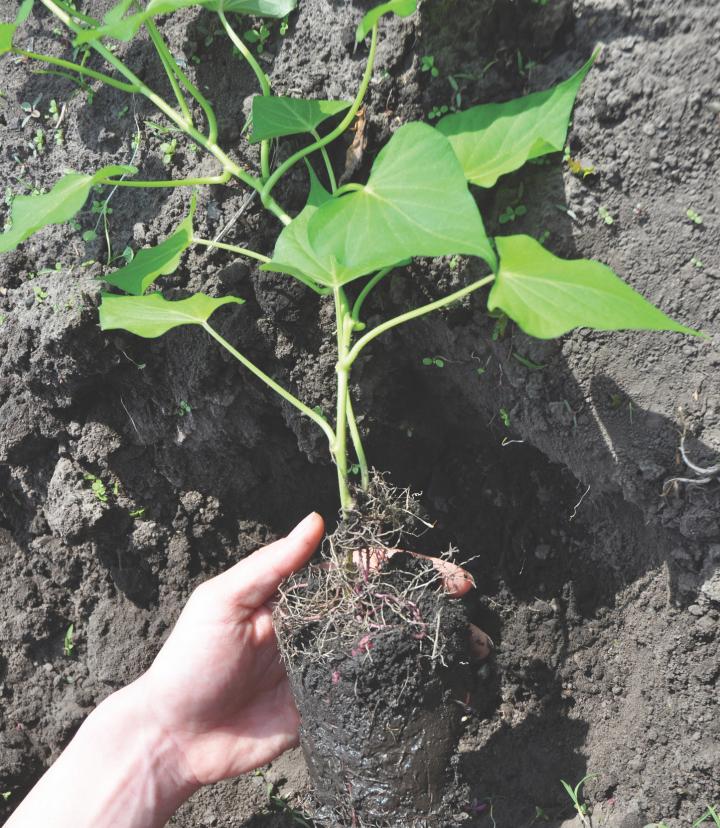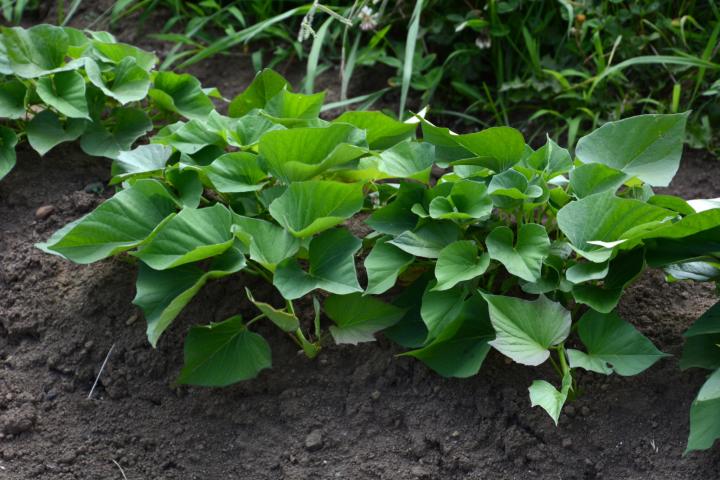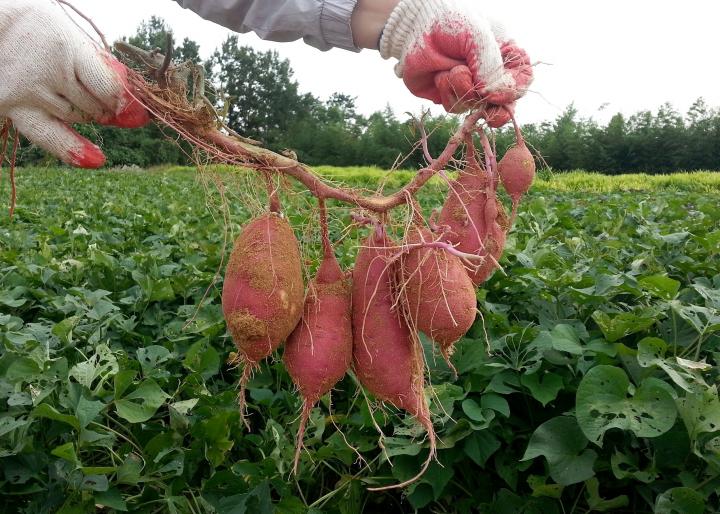
Planting, Growing, and Harvesting Sweet Potatoes
The Almanac Garden Planner - Use It Free for 7 Days!
Plan your 2025 garden with our award-winning Garden Planner.
Types
The fastest-growing sweet potato varieties have orange flesh, but you might also consider varieties with white, yellow, or even purple flesh. Note that orange-flesh varieties cook up moist; white and yellow sweet potatoes become creamy; purple sweets are dry and starchy.
- ‘Beauregard’ (90 days) originally comes from Louisiana, but grows well in the North, too. It has dark red roots, dark orange flesh, and stores well.
- ‘Bush Porto Rico’ (110 days) is good for small gardens and for baking.
- ’Centennial’ (100 days) is the leading variety in the U.S. It is carrot-colored and has a good storage life; good producer for northern growers.
- ‘Georgia Jet’ (90 days) has red skin that covers moist, deep orange flesh. It is an extremely fast-growing type; good for the North.
- ‘Jewel’ (120 days) has copper-colored skin and orange flesh; disease-resistant; stores well.
- ‘Stokes’ (120 days) offers a vibrant purple color and is full of extra health benefits; cooks well in savory dishes and mashes.
- ‘Vardaman’ (110 days) is a bush type and good for small gardens; it has unique blue/purple foliage, golden skin, and reddish-orange flesh; stores well.
- ‘White Yam’ (aka ‘White Triumph’)(100 days)has white skin covering dry white flesh; one of the oldest sweet potato varieties; has compact vines.
Cooking Notes
Relatively low in calories, sweet potatoes are very nutritious, a top source of beta-carotene, and contain some protein, calcium, iron, vitamins A and C, and other minerals. They can be stored longer than winter squash.
To cook, sweet potatoes are easier than pie (or sweet potato pie!).
- They can be scrubbed, poked with a fork in a few places, and baked at 400°F for 35 minutes to 1 hour, until they give a bit when you squeeze them in your pot-holder–protected hand.
- In the microwave, a whole sweet potato baked on high should be ready in 4 to 6 minutes. It may still feel firm when done; let it stand for about 5 minutes to soften.
- Sweet potatoes can also be steamed whole (cleaned and unpeeled) for about 40 minutes or until tender or cooked whole (cleaned and unpeeled) in boiling salted water for about 35 minutes. (Boiling reduces the flavor considerably.)
- Immerse cut raw sweet potatoes in water until you’re ready to cook them; they will darken otherwise.
As a general rule, don’t substitute sweet potatoes for regular potatoes in recipes; the two aren’t related. Sweet potatoes don’t hold together the way potatoes do, and their strong flavor can overwhelm a dish meant for a milder potato taste. Sweet potatoes are also not related to yams. But they make a fine substitute for pumpkin, especially in desserts.
Check out our ten best sweet potato recipes!
ADVERTISEMENT
How do you deal with gold beetles eating your plants?
Golden beetles, also known as tortoise beetles, are best controlled by hand picking off of plants. Also, make sure your planting area is free of weeds and that your plants are getting proper water and fertilizer. Unless the number of beetles are excessive, they will not cause significant damage to your sweet potatoes.
If using a raised bed, how tall/wide should it be?
Raised beds are a great idea if you have clay soil or drainage problems. They should be 8 to 10 inches high.
My sweet potato slips are doing great, in fact a little too great. Some vines are getting quite long and it's still 5-6 weeks until I put them in the ground. Allowing 2 weeks to root, I still have 3-4 weeks with them growing. Can I trim them back now before I root them?
Hi Lisa,
Glad to hear your sweet potato slips are doing so well! You want your slips to be about 6 to 12 inches tall when you begin the rooting process. If yours are much longer than that, you can certainly trim them back (do so below a node). But, if your slips are long enough, you can also divide them into multiple sections to root. If they are leggy and thin, it might be best to cut back to where the slips are thicker and more firm and just root those ones.
We have what is called an 'Old Fashioned German WHITE Sweet Potato'. However, I see nothing in your article relating to these. The texture is between a regular Irish White potato and what we consider a Yam/sweet potato in Southern Indiana. Any thoughts on this. We like these much better than the Orange/soft textured type. They also hold up much better being baked/roasted and are difficult to find. I propagate from previous year's potato every year beginning process in late January.
Do sweet potatoes produce only at the base of the plant? Or do they also produce along the vine if they are allowed to touch and root?
I have options for vertical gardening or ground, but I need to know if I'll sacrifice production or waste ground space.
Hi, Melissa. You are correct in thinking if any nodes on the vine touch the ground and root, another sweet potato plant will grow. It’s best to keep that from happening, allowing the plant to put all of its energy into the original planting.
My sweet potato plant isn't getting enough sun where I have it planted. Is it possible to dig it up and move it to another location without hurting it?














